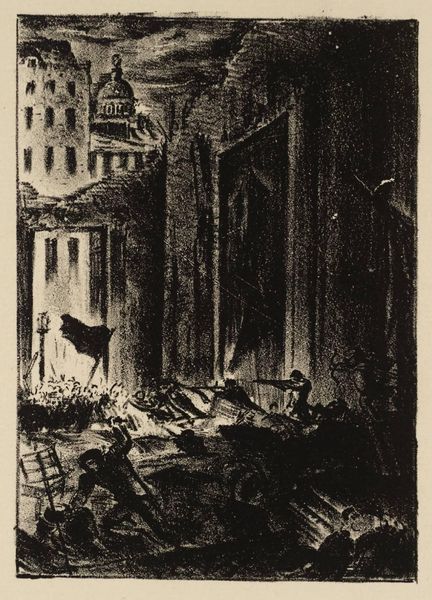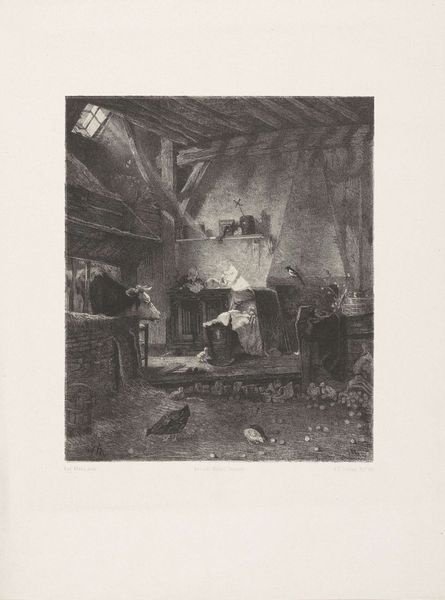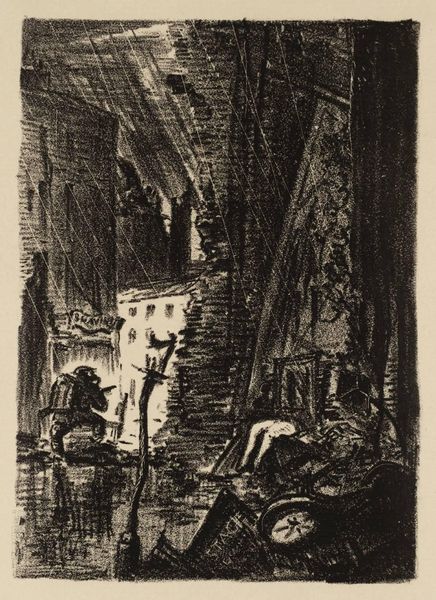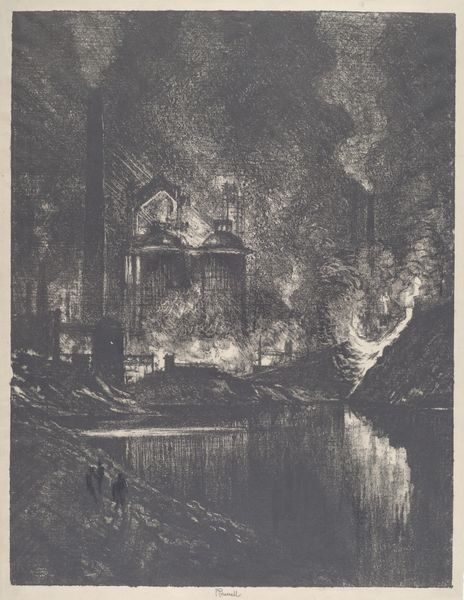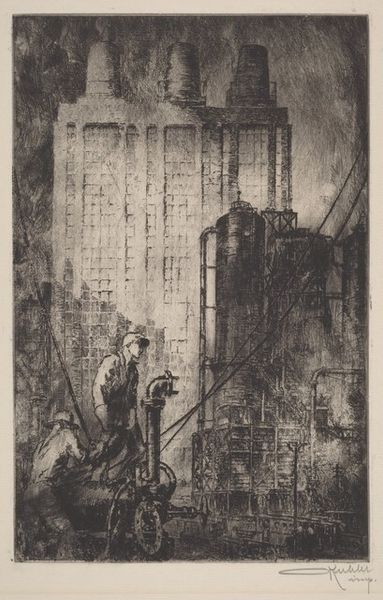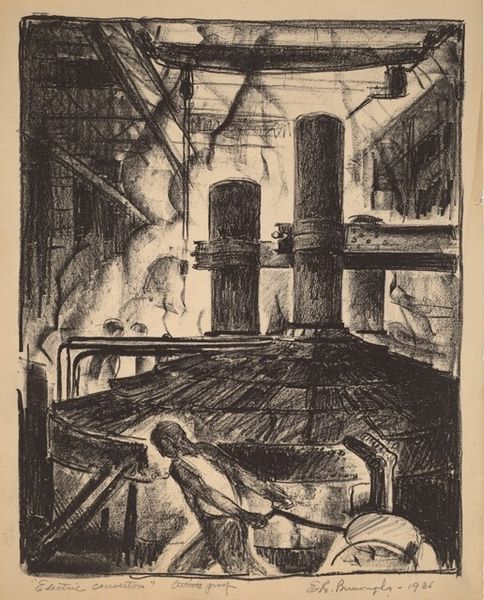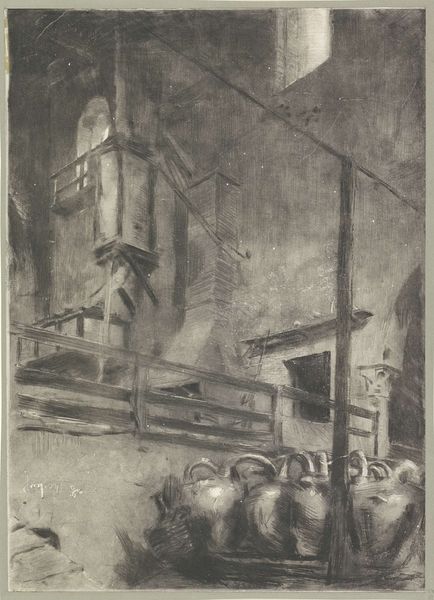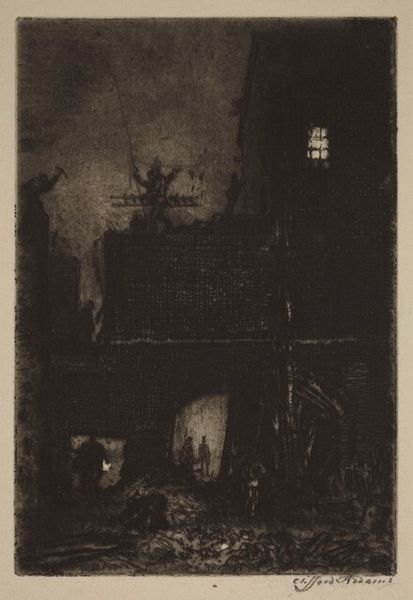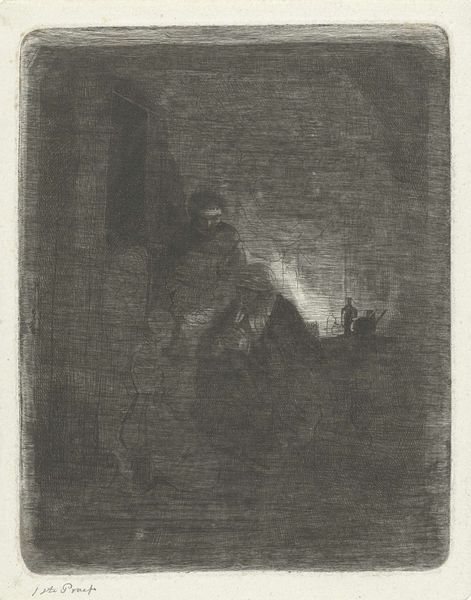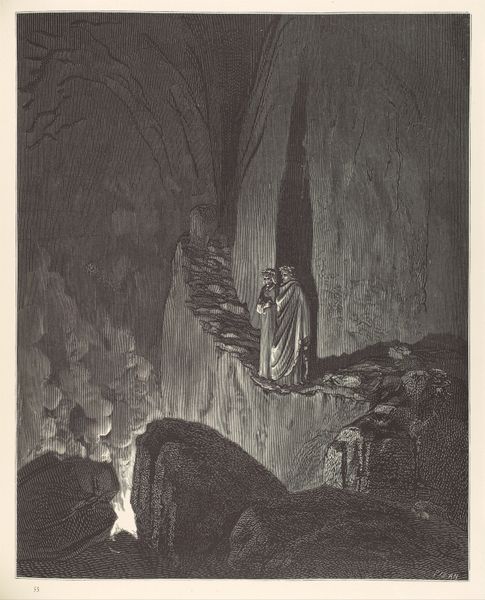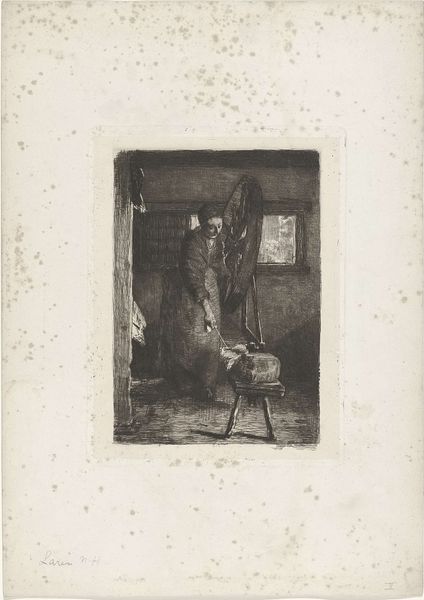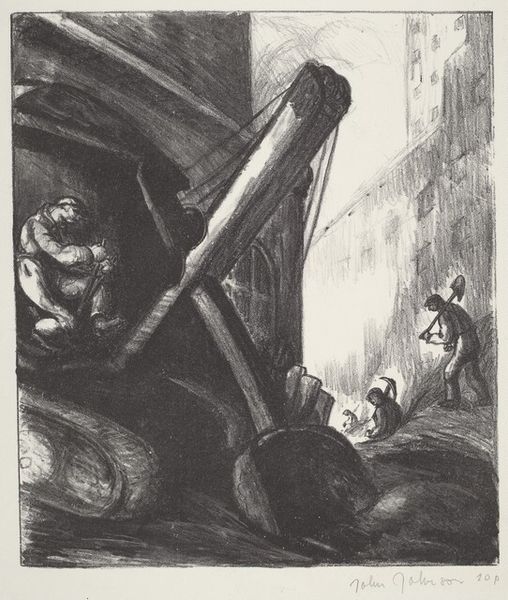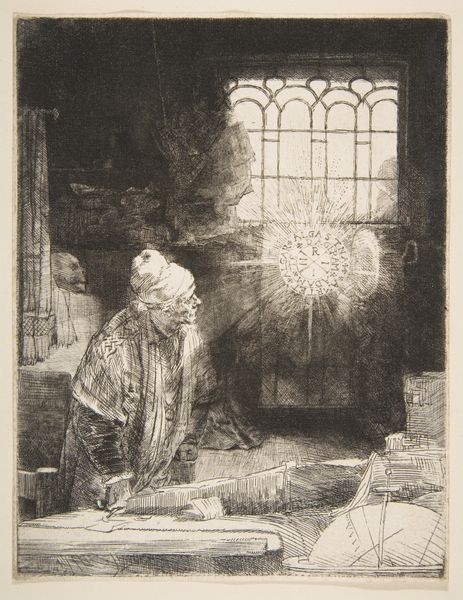
print, intaglio, graphite
#
pencil drawn
# print
#
intaglio
#
pencil sketch
#
landscape
#
graphite
#
cityscape
#
pencil work
#
modernism
#
realism
#
monochrome
Dimensions: Image: 369 x 212 mm Sheet: 452 x 331 mm
Copyright: National Gallery of Art: CC0 1.0
Curator: Standing before us, we have "Construction," an intaglio print rendered in graphite, likely on paper. It’s the work of Ralph Eugene Della-Volpe, and dates back to the late 1940s, 1947 to 1948 to be exact. Editor: My first impression is…industrial melancholia? All these looming forms rendered in near-monochrome make it seem imposing yet lonely. Curator: That’s an interesting take. I see it as capturing a pivotal moment of urban development in America. This was just after World War II; cities were being rebuilt, industries were booming, and there's a kind of stark realism. The image's low perspective and compressed space definitely amplifies a sense of awe and maybe a touch of claustrophobia. Editor: Claustrophobia, absolutely. But also, beauty in the bleakness? I’m drawn to the way the artist uses light – it almost feels like moonlight hitting these gigantic structures and tiny human figures, dwarfed by what they are constructing. Is it progress or something more ambiguous? Curator: That’s the beauty of art, isn't it? Della-Volpe, through the cityscape theme and precise use of intaglio, perhaps nudges us to reflect on how industrial advancement shaped the societal fabric and the individual experience during that era. The "pencil work" quality, gives it an almost dreamlike state, which makes it easier to wonder what impact such changes would bring. Editor: Yes! It does feel very much like an anxious, yet exciting, dream. Maybe that says a lot about post-war America as a whole. Curator: Indeed. It makes me wonder, what conversations did images like these spark, back when they were first exhibited? Did viewers ponder their place in the burgeoning metropolis, or were they simply awestruck by the display of industry's dominance? Editor: Hmmm. I keep circling back to those miniature laborers amidst these monolithic forms…it speaks volumes about labor, and what individuals contribute, willingly or unwillingly, to larger systems. Curator: A point well made! Thanks for the fascinating insights. Editor: Always a pleasure. And thank you for shedding more light on this somewhat dimly lit cityscape. I walk away seeing it with different eyes.
Comments
No comments
Be the first to comment and join the conversation on the ultimate creative platform.
